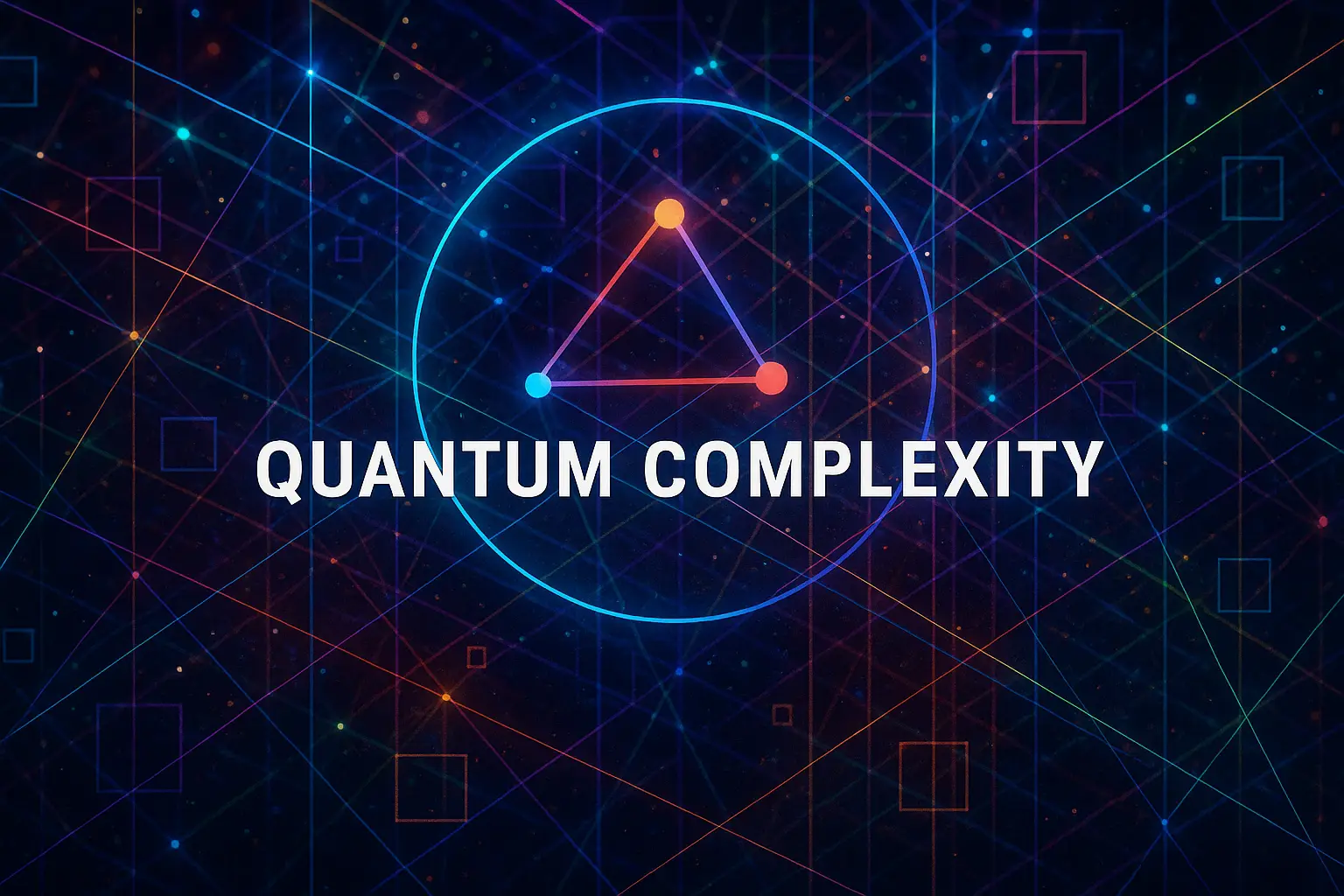Table of Contents
- Introduction
- Motivation and Importance
- Basics of Topology in Physics
- What is Topological Quantum Computation (TQC)?
- Anyons and Their Role in TQC
- Braiding Anyons as Quantum Gates
- Fusion Rules and Measurement
- Topological Qubits and Encoding
- The Toric Code Model
- Surface Code and Topological Error Correction
- Non-Abelian Anyons and Universality
- Fibonacci Anyons and Computation
- Advantages of TQC: Fault Tolerance
- Comparison with Other Quantum Models
- TQC in Quantum Field Theory and Chern-Simons Theory
- Physical Systems Supporting Anyons
- Experimental Status and Implementations
- Challenges and Open Problems in TQC
- TQC in the NISQ Era
- Future Directions and Conclusion
Topological Quantum Computation: A Fault-Tolerant Quantum Framework
Table of Contents
- Introduction
- Motivation and Importance
- Basics of Topology in Physics
- What is Topological Quantum Computation (TQC)?
- Anyons and Their Role in TQC
- Braiding Anyons as Quantum Gates
- Fusion Rules and Measurement
- Topological Qubits and Encoding
- The Toric Code Model
- Surface Code and Topological Error Correction
1. Introduction
Topological Quantum Computation (TQC) is a model of quantum computing that uses topological properties of quasiparticles known as anyons to perform computation. These particles exist in two-dimensional systems and exhibit non-trivial braiding statistics, making TQC inherently fault-tolerant and robust against local errors.
2. Motivation and Importance
Quantum computers are notoriously sensitive to errors due to decoherence and imperfect operations. TQC offers a natural solution by encoding quantum information into topological states of matter, which are inherently protected from local perturbations and noise.
3. Basics of Topology in Physics
Topology studies properties preserved under continuous deformations. In physics, topological phases of matter are characterized by global, non-local properties rather than local symmetries. These properties provide the foundation for encoding and manipulating quantum information in TQC.
4. What is Topological Quantum Computation (TQC)?
TQC involves creating, braiding, and fusing anyons in a 2D medium. The quantum information is stored in the topological state of the system and evolves through the braiding of anyons, which implement quantum gates via their worldlines in spacetime.
5. Anyons and Their Role in TQC
Anyons are quasiparticles that exist in two dimensions. They exhibit braiding statistics that are neither bosonic nor fermionic. In TQC, anyons serve as the fundamental carriers of quantum information, and their exchange operations act as quantum gates.
6. Braiding Anyons as Quantum Gates
The braiding of anyons—moving one around another—implements unitary transformations on the encoded quantum state. These operations are topologically protected because they depend only on the global path, not the local details of motion.
7. Fusion Rules and Measurement
When anyons come together, they can fuse into different types based on fusion rules. Measuring the outcome of such a fusion allows extraction of quantum information. The rules are governed by the underlying topological quantum field theory.
8. Topological Qubits and Encoding
Qubits in TQC are typically encoded using a set of non-Abelian anyons. The space of possible fusion outcomes defines a Hilbert space that stores the logical qubit. Logical gates correspond to braiding operations within this space.
9. The Toric Code Model
The toric code, proposed by Alexei Kitaev, is a lattice model where topological qubits emerge from stabilizer operators. It features Abelian anyons and is useful for understanding topological order and error correction.
10. Surface Code and Topological Error Correction
The surface code is a leading error correction scheme that combines topological ideas with stabilizer codes. It uses local operations on a 2D lattice and offers high threshold rates for fault tolerance, even without full anyon braiding.
11. Non-Abelian Anyons and Universality
Non-Abelian anyons are crucial for universal quantum computation. Their braiding operations span a non-commutative group, allowing implementation of arbitrary quantum gates. Systems like Fibonacci anyons can provide universality with braiding alone.
12. Fibonacci Anyons and Computation
Fibonacci anyons are a theoretical model with particularly simple fusion and braiding rules. A TQC system based on Fibonacci anyons is universal: any quantum computation can be approximated to arbitrary accuracy by braiding operations alone.
13. Advantages of TQC: Fault Tolerance
TQC is naturally fault-tolerant because information is stored in non-local degrees of freedom. This makes it resilient to local noise and errors, significantly reducing the overhead required for quantum error correction.
14. Comparison with Other Quantum Models
TQC offers inherent fault-tolerance that gate-based and measurement-based models must engineer through complex codes. However, it can be harder to implement due to the exotic nature of required quasiparticles and topological materials.
15. TQC in Quantum Field Theory and Chern-Simons Theory
TQC is closely related to topological quantum field theories, especially Chern-Simons theory. The mathematics of anyon braiding corresponds to representations of braid groups in these theories, offering a deep theoretical foundation.
16. Physical Systems Supporting Anyons
Candidate systems include:
- Fractional Quantum Hall states
- Topological superconductors
- Spin liquids
- Majorana zero modes in nanowires
These systems are actively studied for realizing TQC experimentally.
17. Experimental Status and Implementations
While direct demonstration of non-Abelian anyons is still evolving, promising results have emerged from:
- Quantum Hall interferometry
- Braiding Majorana modes
- Lattice spin models in cold atoms
TQC remains a long-term goal but is increasingly supported by experimental data.
18. Challenges and Open Problems in TQC
- Realization of stable non-Abelian anyons
- Error correction for topological codes
- Scalability of TQC architectures
- Integration with NISQ devices
These are key areas of ongoing research.
19. TQC in the NISQ Era
Though TQC is traditionally seen as a fault-tolerant model for the long term, hybrid schemes that incorporate topological principles into NISQ-era platforms are emerging. These include using surface codes on superconducting qubits and simulating anyonic systems.
20. Future Directions and Conclusion
TQC provides a conceptually elegant and physically motivated path to robust quantum computation. Continued research into topological materials, anyon detection, and braid-based logic promises to unlock its full potential in future scalable quantum machines.


